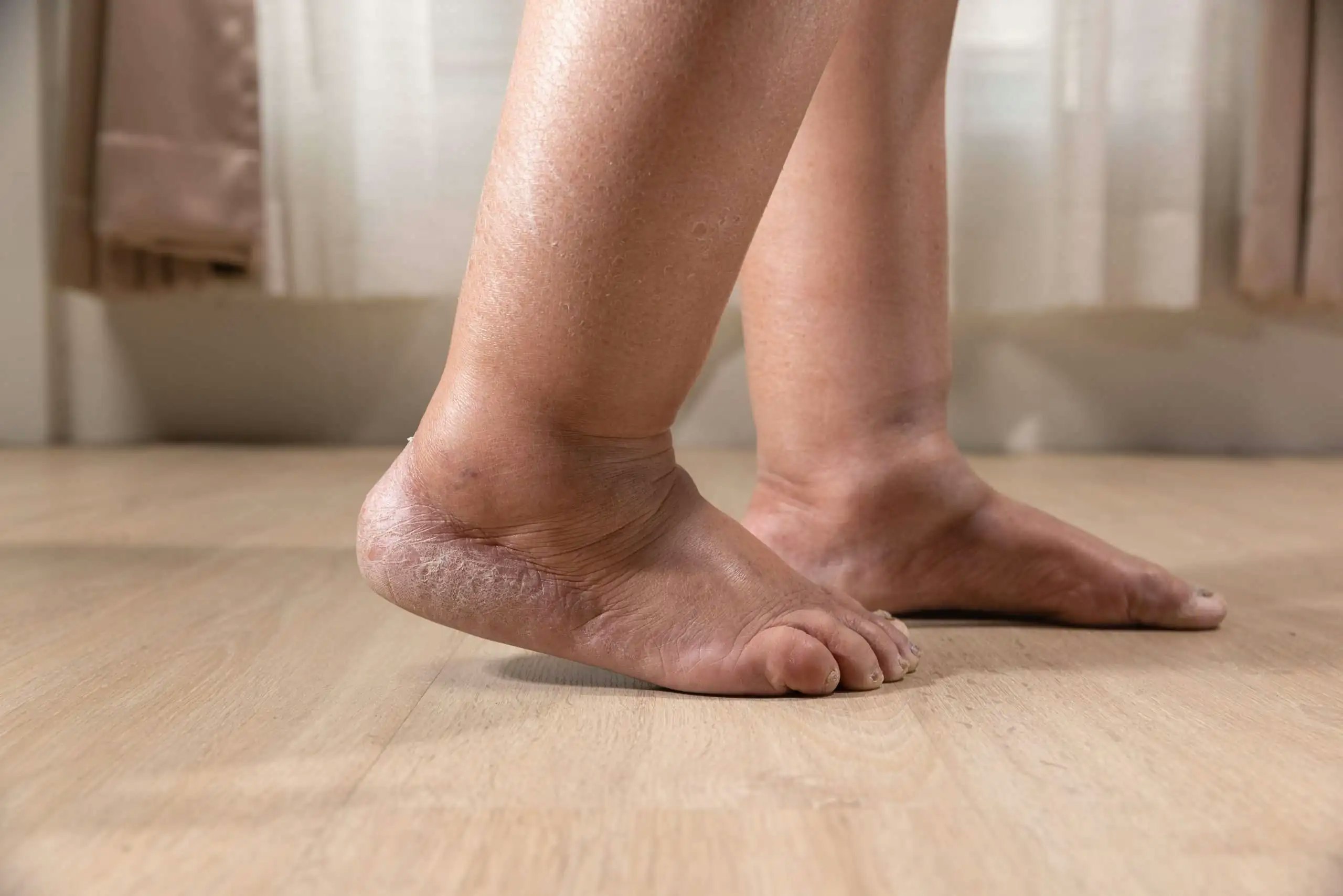If you’ve ever experienced swollen feet and ankles, you know just how uncomfortable they can be. While it’s common, especially if you’ve been standing, walking, or sitting all day, they can also signal something may be off with your body.
The puffiness and tight skin that come with this swelling (also known as edema) is considered normal if it occurs occasionally. But if it happens more often, it might be a red flag that something more serious is at play, such as heart failure, (deep vein thrombosis, or DVT), cirrhosis of the liver, or kidney disease. Because of this, it’s important to look deeper into the cause of your foot and ankle swelling.
So, what causes this swelling, and how can you know when it’s time to see a doctor? We’ve got you covered.
What Causes Swollen Feet and Ankles?
Swelling happens when excess fluid gets trapped in the tissues of your feet and ankles. There are several relatively harmless reasons this could happen—perhaps you just ate a salty meal or have been sedentary for too long, binge-watching your favorite show. But other times, the cause of lower-leg swelling could reflect more serious health issues. Here are some common reasons why your feet and ankles might swell:
- Standing or Sitting for Too Long
Whether you’ve been on your feet all day or sitting at a desk for hours, gravity can cause blood to pool in your lower extremities, leading to swelling in your feet and ankles by the end of the day. - Pregnancy
Foot and ankle swelling is very common during pregnancy, with up to 80% of women experiencing edema due to increased fluid retention and pressure from the growing baby. It is also common for women to develop swollen feet postpartum. - Menstrual Cycle
Hormonal changes around the menstrual cycle can lead to symptoms like cramping, bloating, fatigue, and water retention. These shifts also make it common and normal for women to have swollen ankles around the time of their period. - Health Conditions
More serious causes of swelling can include underlying health conditions like heart failure, kidney disease, and diabetes. For those with diabetes and swollen feet, circulation issues can cause fluid buildup. If your swelling is persistent or accompanied by other symptoms, it’s important to consult your doctor.
How to Reduce Swollen Feet and Ankles
If your swollen feet and ankles are a recurring issue, here are a few key ways to find relief:
- Elevate Your Feet
Next time you notice your feet are swollen, try propping them up above heart level for 15-30 minutes. This helps fluid drain away from your lower extremities and reduces swelling. - Stay Active
Movement improves circulation, so make a point to stretch, walk around, or do some light exercises if you’ve been sitting or standing for long stretches of time. - Use Compression Socks
Compression socks help alleviate swollen legs and feet by applying pressure to keep fluid from collecting in your lower extremities. They’re especially useful if you know you’ll be in one position for an extended time, such as on long flights or car rides. - Reduce Salt in Your Diet
Too much salt can cause water retention, which can lead to swelling. Cutting back and prioritizing a balanced, low-sodium diet is not only good for your overall health but also keeps swelling in check.
When to See a Doctor
Occasional swelling in your feet and ankles is usually nothing to worry about, but if it becomes more frequent or worsens, checking in with your healthcare provider for guidance might be a good idea.
Symptoms like pain, redness, or warmth may indicate an infection or blood clot, while sudden swelling in one leg could signal a condition like DVT.
Persistent swelling could also be related to underlying health issues, such as heart or kidney conditions. If you’re noticing regular swelling or additional symptoms, it may be time to consult your podiatrist.





